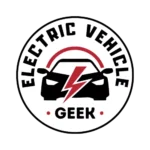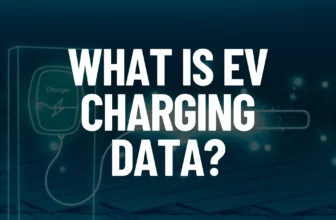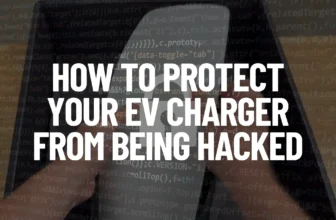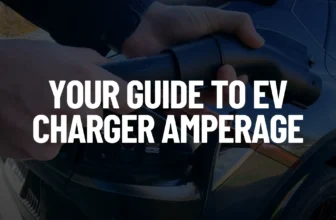EV charging subpanels serve as intermediary connections between the main electrical panel, circuit breakers, and the EV charger. Their primary function is to transmit electricity from the main panel, regulate its flow, and establish a direct power connection to the EV charger.
Adding an EV charging subpanel can greatly enhance the efficiency of your EV charging installation by distributing energy from the main electrical panel to the EV charger, they also facilitate switching between renewable energy EV charging systems and offers numerous benefits in terms of EV charging installation maintenance, moreover, they provide flexibility in EV charger installations and expansion of your EV charging system without overloading your main panel.
To determine if you need a subpanel for an EV charger installation, a licensed electrician will need to determine if your electrical panel will support the EV charger installation.
Recommended Related Posts:
- Will I Need a Service Panel Upgrade for My EV Charger?
- Electric Vehicle Charger Circuit Breaker Selection Guide
- Top 5 Best Smart Meters For EV Charging.
Table of Contents
Why Would You Need a Subpanel for an EV Charger?
There are five main reasons why a licensed electrician would recommend installing a subpanel for your EV charger installation.
Increase Electrical Capacity.
If your main electrical panel lacks the capacity for the extra circuit breakers, wires, and accessories needed to install an EV charger, an electrician may suggest adding a sub-panel. This allows room for the additional circuits and electrical components required.
Organization and Convenience.
A licensed electrician can also recommend installing a subpanel for EV charger installation for clean organized EV charger installation, this is when they want to group and organize circuits related to EV charging together especially if there are multiple EV chargers or dedicated EV charging sources such as renewable energy installations or bi-directional EV charging, this becomes easier to manage EV charging electrical loads and troubleshoot issues when they arise.
Installation of a subpanel might also be necessary if your main electrical panel is installed far from your EV charging point, by installing a subpanel close to the point of use will minimize voltage drops, and also provide reliable power delivery.
Voltage Drops Mitigation.
Depending on your EV charger and the location of your main electrical panel, a licensed electrician might request the installation of a subpanel to mitigate voltage drops, some EV chargers require short distances of EV charger outlets for plug-in installations, or connection boxes for hardwired installations, by installing a subpanel closer to the EV charger outlets and connection boxes voltage drops can be minimized ensuring consistent and reliable power delivery to the EV charger.
Code Compliance.
Installing an EV charger would require the installation of dedicated circuits or expansion of your home electrical system to accommodate the EV charger installation, in such cases electric codes will require the installation of a subpanel for EV charging to meet safety and regulatory standards.
Future EV Charger Upgrade & Retrofit.
A licensed electrician can assist in determining the need for a subpanel, particularly considering potential future upgrades to your EV charging setup, such as adding extra chargers, incorporating renewable energy sources, or integrating accessories like smart meters for monitoring. Installing a subpanel offers flexibility for future expansion or upgrades, providing space for additional circuits and EV charging components without overloading the main panel or requiring extensive rewiring.
Choosing the Right Type of Subpanel for EV Charger Installation.
Best Electrical Panel For EV Charging
There are seven types of subpanels that a licensed electrician can recommend for your EV charger installation, they include:
EV Charging Main Lug Subpanel.
An EV charging main breaker subpanel is connected directly to the main service panel and doesn’t have a main breaker, however, a dedicated EV charger circuit breaker is installed for the EV charger as shown in the EV charging main lug subpanel circuit wiring below.

We recommend installing a dedicated EV charger circuit breaker on the main lug subpanel to mitigate voltage drops and consolidate EV charger circuits in one electrical panel for easier management.
An EV charging main lug subpanel is commonly installed in single-family home EV charger installations where the main panel is sufficient.
EV Charging Main Breaker Subpanel.
An EV charging main breaker subpanel is similar to a main panel because it includes a main circuit breaker, a licensed electrician might request an additional main breaker subpanel when additional overcurrent protection is needed for the subpanel circuits, and they may also request a main breaker subpanel installation when they want to use it as a service distribution point for multiple EV charging circuits.
An EV charging main breaker subpanel connected to a main panel circuit diagram is shown in the circuit wiring diagram below.

EV Charging Load Centre Subpanel.
An EV charging load center subpanel is recommended to accommodate a wide range of circuit configurations in your EV charging installation. An EV charging load center subpanel circuit diagram is shown below:

As you can see in the EV charging load center subpanel circuit diagram above, the setup can be used in both residential and commercial EV charging installations to expand the electrical system capacity such as by adding multiple EV chargers and also providing space for additional circuits and EV charging components such as smart meters wiring and sensors.
EV Charging Specialty Subpanels.
An EV charging specialty subpanel is recommended for specific EV charging installations, some of the reasons why an EV charging specialty subpanel might be installed include outdoor EV charging installations, bi-directional EV charging, or the integration of renewable energy systems in EV charging such as solar EV charger installations.
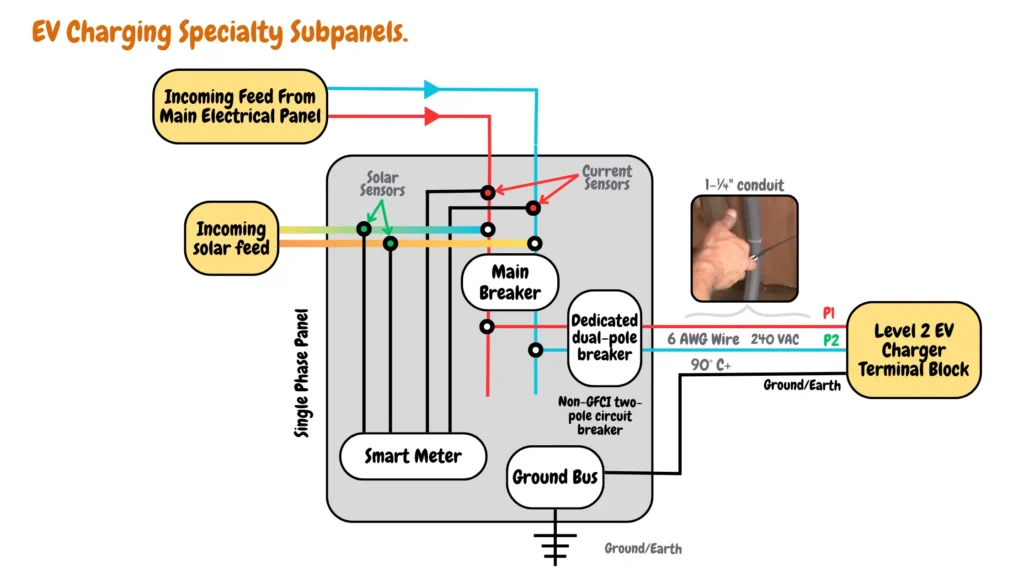
An electrician might also recommend the installation of specialty subpanels with surge protection features if the EV charger or EV charging electrical components are sensitive to power surges. Some chargers with sophisticated electronic components include smart home level 2 EV chargers that require surge protection devices to help prevent damage to electric vehicle charging systems and ensure they operate safely and efficiently.
Renewable Energy EV Charging Subpanels.
Renewable energy EV charging subpanels are designed to facilitate the connection of renewable energy systems to your EV charger installations, they include provisions for safely switching between the grid power and renewable energy systems during outages.
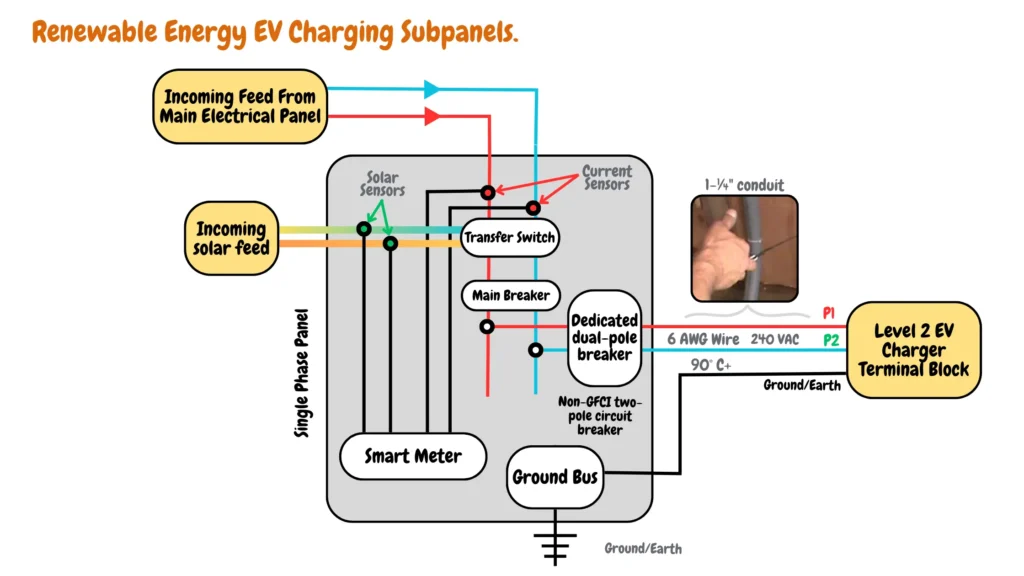
Renewable Energy EV charging subpanels offer extra room for devices, circuits, and wiring related to renewable energy systems. They also provide space for additional components, like smart meters, which are essential for monitoring both EV charging and renewable energy production and consumption
EV Charging Compact Subpanels.
EV charging compact subpanels are recommended when there is no space for installation of a bigger electrical panel, an EV charging compact subpanel can be installed in limited spaces such as the garage or utility closet.
EV charging compact subpanels are recommended for simple EV charging installations such as residential EV charging installations because of their condensed nature, they provide limited spaces for additional circuits and wiring.
Three-Phase EV Charging Subpanels.
Three-phase EV charging subpanels are installed mainly for commercial EV charging installations, they can also be installed in residential installations where three-phase electrical power is available, three-phase EV charging subpanels are recommended for fast-charging EV chargers such as Level 3 EV chargers to allow efficient distribution of power to the heavy-duty chargers such as Level 3 EV chargers that require 480-volt three phase power.
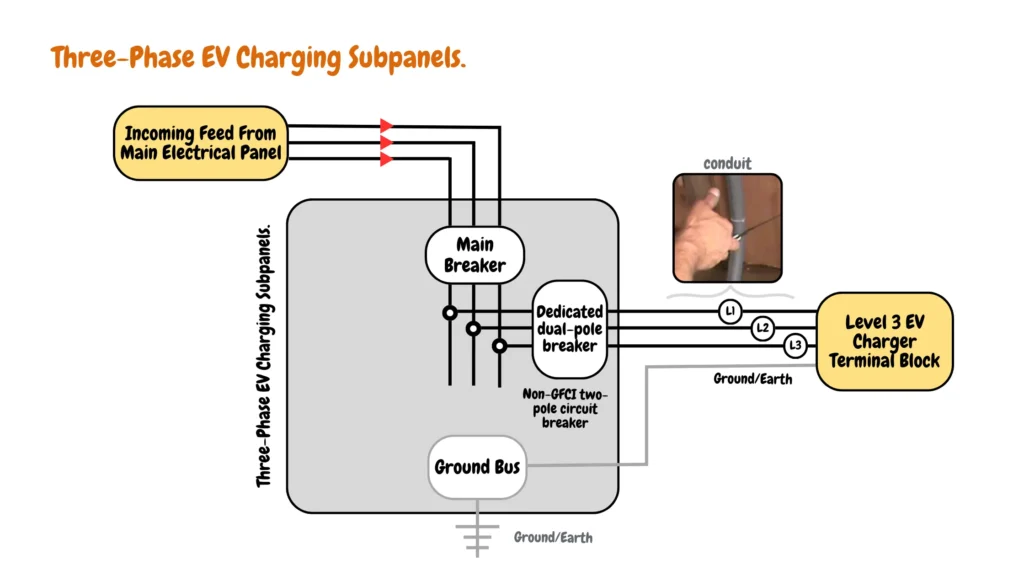
When it comes to subpanels, there are several types available, each designed for specific applications and electrical requirements:
Conclusions.
The selection of the appropriate subpanel for your EV charger installation hinges on factors like the electrical system’s size, installation requirements, and adherence to relevant electrical codes and regulations. Seeking guidance from a qualified electrician can aid in identifying the optimal subpanel for your EV charger setup.

James Ndungu is a certified EV charger installer with over five years of experience in EVSE selection, permitting, and installation. He holds advanced credentials, including certification from the Electric Vehicle Infrastructure Training Program (EVITP) and specialized training in EV charging equipment and installation, as well as diplomas in EV Technology and Engineering Fundamentals of EVs. Since 2021, James has tested dozens of EV chargers and accessories, sharing expert insights into the latest EV charging technologies.
